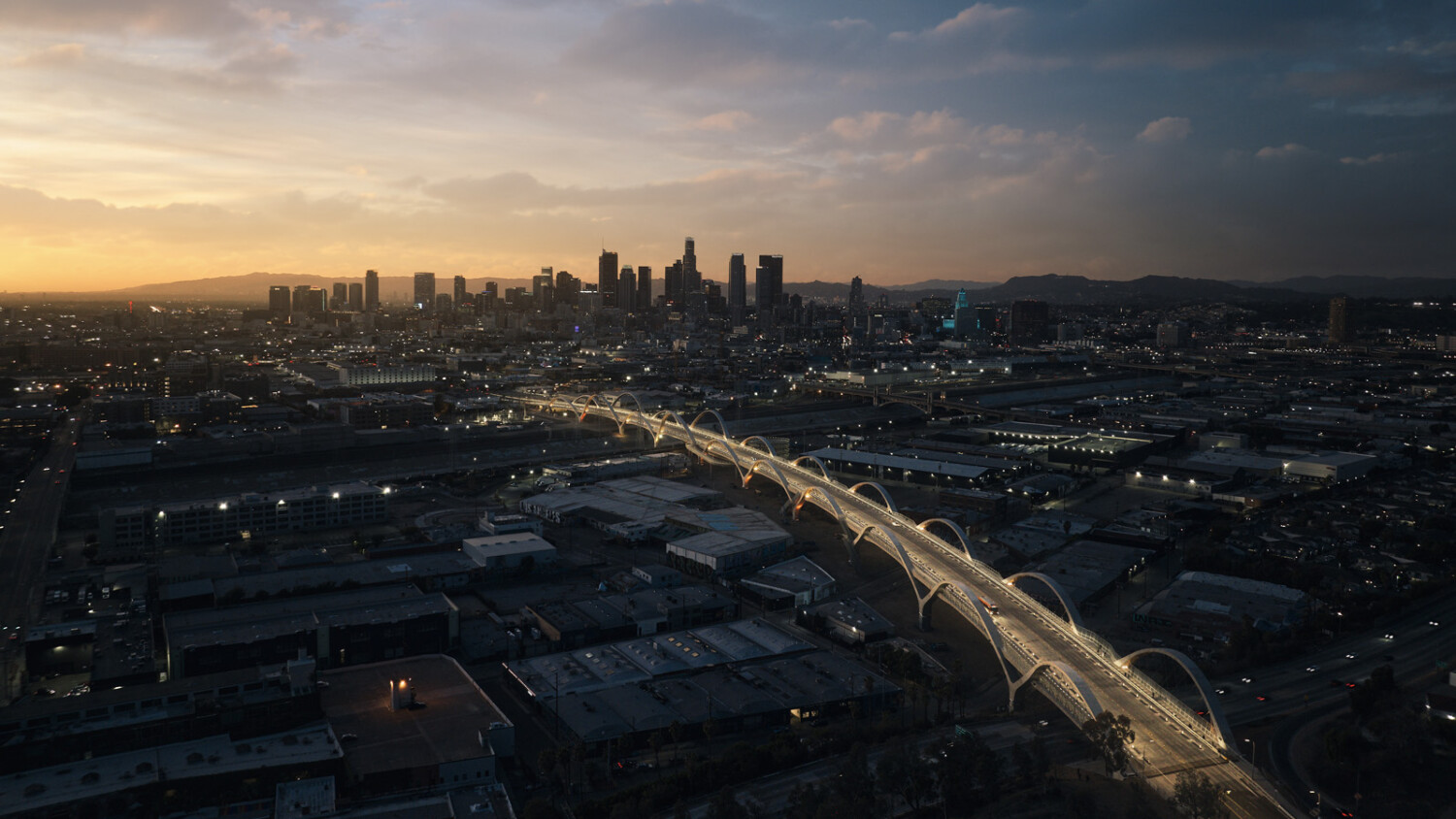Christian Santiago Breaks Down His Personal Project of the New Sixth Street Viaduct Bridge
The old Sixth Street Viaduct Bridge was a cultural icon. Uniting the arts district in Downtown Los Angeles and the Boyle Heights neighborhood, the concrete and steel arch bridge had appeared in heaps of films, shows, and video games since its completion in 1932.
It debuted in the 1932 film I Am a Fugitive from a Chain Gang, and since has appeared in everything including, The Terminator 2, Gone in 60 Seconds, Anchorman, The Dark Night Rises, an episode of Lost, music videos for Vanessa Carlton, Red Hot Chili Peppers, Foo Fighters, Chicago, Kendrick Lamar, Beck, and the Grand Theft Auto video games. The old bridge was distinctively Los Angeles. Demolished in 2016 because of its degrading concrete and structural instability, the new rendition of the Sixth Street Viaduct Bridge was completed on July 9th, 2022.
Architectural photographer Christian Santiago, a recent LA resident by way of Miami, made the viaduct his personal project this year. With the streets less crowded on Thanksgiving, Christian seized the opportunity to photograph the bridge.
“This project couldn’t have come at a better time for me,” he said. “It’s been a great year for business, but a very challenging one. I’ve been slammed and overwhelmed since July and haven’t had the time to prioritize art for art’s sake.
Shooting commercial photography often means relinquishing control to ‘leadership’ decisions that often don’t mesh with your aesthetic. That’s ok. ‘That’s what the money is for,’ as Don Draper would say. But too much of that can leave you feeling like a technician taking orders rather than an artist.
I was on the verge of burnout. Pursuing this project resuscitated me and reminded me that photography is fun and something I absolutely love to do, which is easy to forget when it’s also your main source of income.”
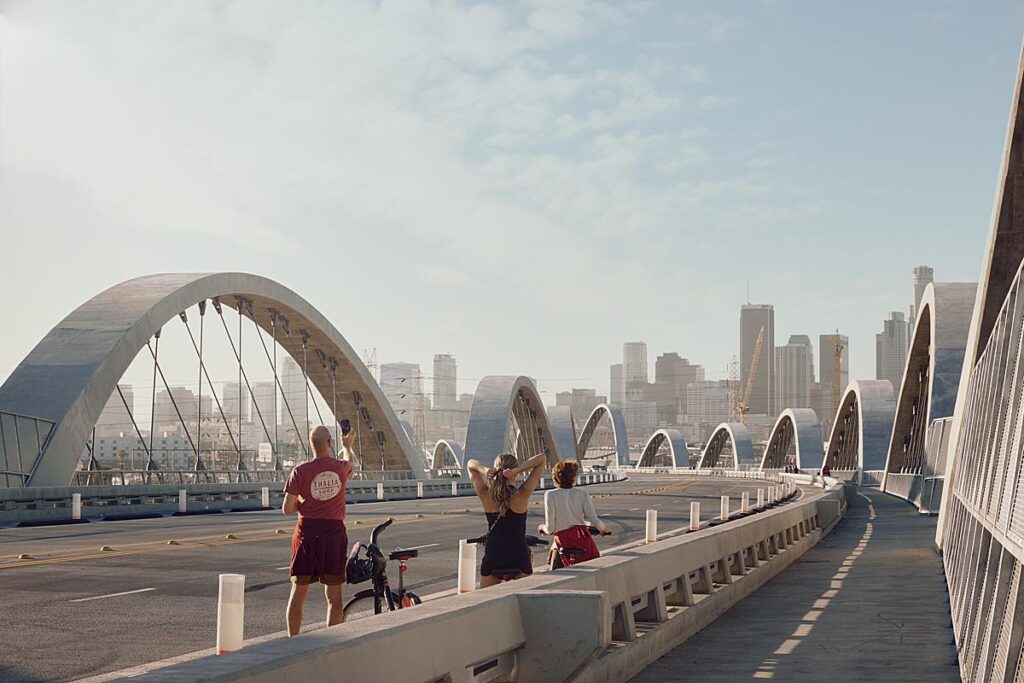
Christian explains “I moved to Los Angeles two years ago during the peak of Covid after a lifetime in Miami and immediately began binging on things to shoot for my portfolio to market myself as based in Southern California. The Viaduct was still under construction at the time, but I knew I wanted to shoot it the second it was open to the public as it fit the criteria of inspiration that overcomes my inherent laziness.
Architecture is made for humans. I love to see it in use, so that’s how I shoot it. My favorite thing to do in this world is wander through cities and watch them breathe, so it stands to reason that my favorite projects are often public works designed to pump that life throughout the city. They provide a function (parking garages, bridges, skateparks, etc.), but serve a higher purpose of cultural significance. You can usually associate them with their respective cities. These are the projects that inspire me to tell stories with images rather than just take pictures.”
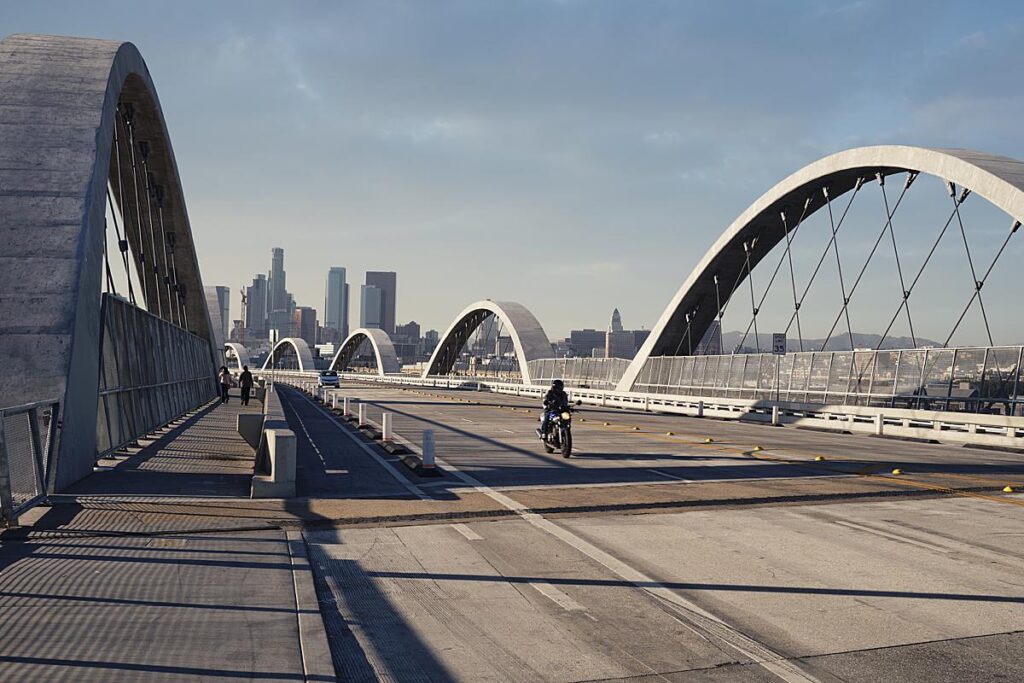
He continues, “The old 6th street viaduct is a historical landmark in Los Angeles that was easily spotted in hundreds of films, shows, and music videos since its construction in the 1930s, and I am confident the renovated version will carry that torch. From a design perspective, I really love that it embraces the industrial, Avant-garde aesthetic around the Arts District and doesn’t try to deviate from it.
I also looked at it from a marketing and SEO perspective. Since the bridge is brand new, there isn’t a nearly hundred-year history of ‘content’ to compete against when it comes to standing out. I felt the images have more than a puncher’s chance of being noticed.”
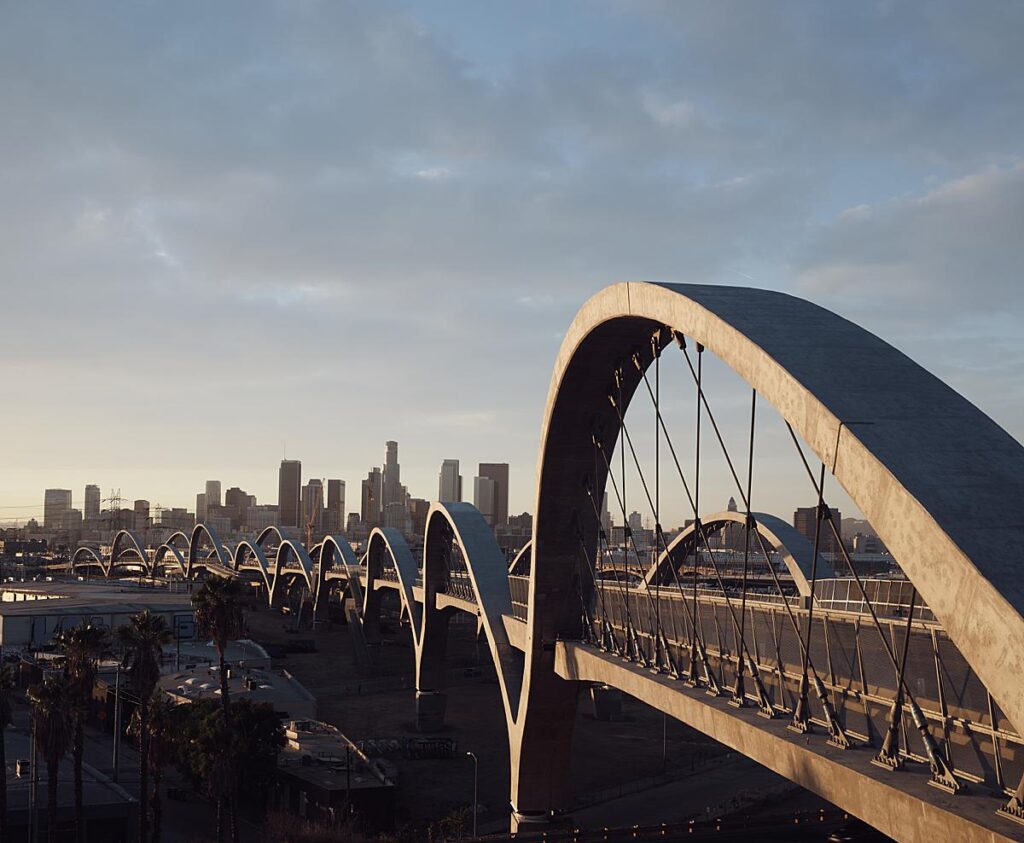
“The logistical difficulty of shooting such large public spaces reveals itself in all the variables you can’t control, which are often plenty. This is an active street. I can’t just shut it down or yell at people to get out of my shot, and since it is downtown Los Angeles, it can be quite sketch, so I had to account for my own personal safety while also concentrating on the work with over 10k worth of gear on me. ( I did this with no assistant or anyone to help me). Some of the compositions I got would have been impossible under normal circumstances as they required me to be on the street where the bridge is normally congested with cars,” Christian explains.
“I solved this by picking the perfect day to shoot it: Thanksgiving. I have no family in LA, so I had nothing better to do anyway, and by 2 pm most people were with theirs, which provided the rarest of events: Los Angeles without traffic
It was perfect. I had the whole bridge to myself and roamed around at will without consciousness. There was just enough human and car traffic to add elements of life to my frames without being overwhelmed with congestion. It also meant I could fly the drone with minimal risks as I didn’t have to worry about flying over people or traffic.
If I had shot this on a normal day, I probably would have been overwhelmed with activity all around me and likely wouldn’t have been able to focus as much of my energy as needed on the project itself, so timing really was everything. The most exciting thing to happen was being yelled at by a cop to get off the street at one point, but he drove off and the rest was uneventful.”

There is so much to love about these photos – the massive range of perspectives, the long shadows, and the golden light – they are all so beautiful and so different but work together perfectly.
I was curious to know how Christian approached shooting a massive subject like the bridge. How did he determine what to include in his compositions? Did he scout beforehand, tracking the light, or show up and wing it? Christian said it was a bit of both.
He elaborates, “I live in long beach, and as I mentioned, I can be quite lazy, so I wasn’t exactly trekking LA traffic for scouting runs. But I did spend quite a bit of time on Google Earth imaging the angles I’d want to shoot and making note of the time and location of the sun to know the optimal time for those long shadows. I knew I wanted them to be predominately featured.
I arrived at the location about 3 hours prior to the ideal lighting. I wanted to walk around and make myself at ‘home,’ take some practice shots, make mistakes and get through the ‘pre-fight’ jitters. Personal projects are supposed to be fun and a bit more relaxed than client work, but they should still be treated as seriously, and I probably put way more pressure on myself than I should get them right. The sun sets at like 4:45 in November when I shot this, so I knew I wouldn’t have much time to get what I wanted, three hours at most, so I wanted to hit the ground running the second I started shooting ‘for real.'”
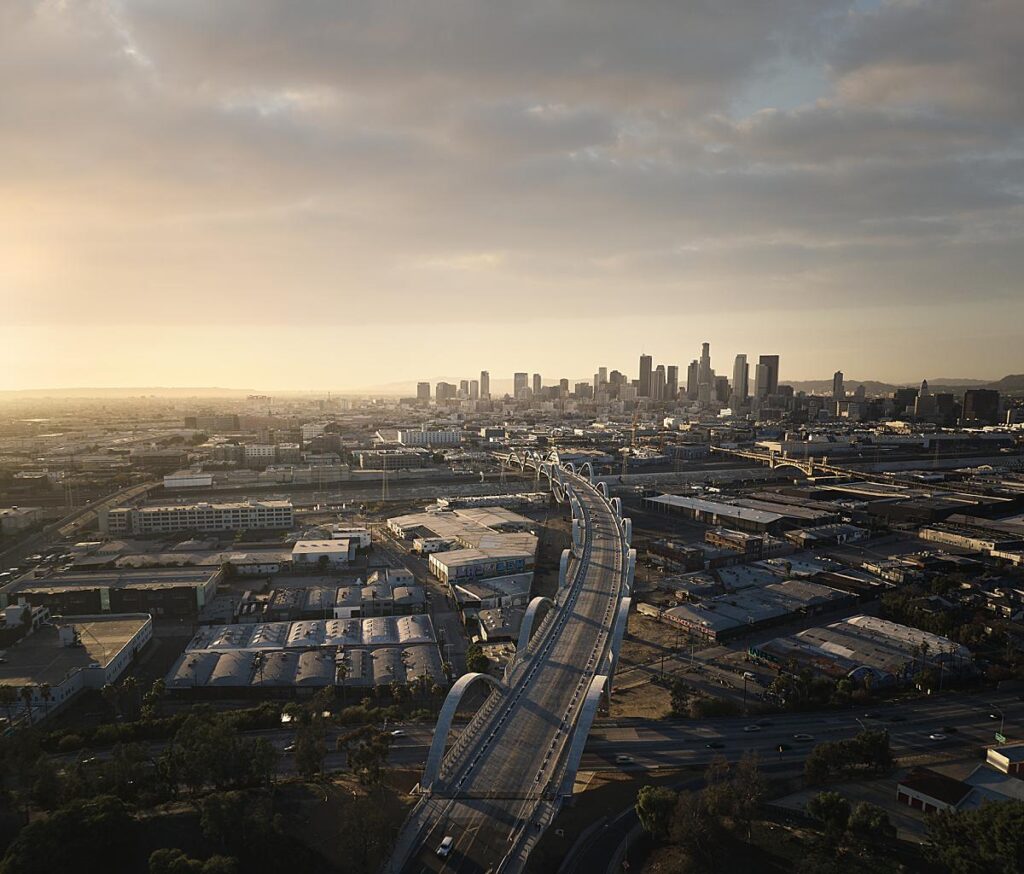
One of my favorite things about this series, is the moody industrial feel of the images. Christian lets things trend dark in these late-in-the-day photos. He also keeps in some of the “blemishes.” If you really look at this next shot, you can see a circular mark on the road from someone doing a burnout. It’s a nice little echo of the circular path rising up to the bridge.
Christian explains “I spend a considerable amount of time perfecting my client work in the post and was all too willing to adopt a different approach for this series. I cloned out some distracting trash and debris, but otherwise left the signs of use. When the bridge first opened, people would routinely gather and do illegal street races on it, hence all the skid marks on the concrete. Those scars tell a story and it just didn’t feel right to remove them.”
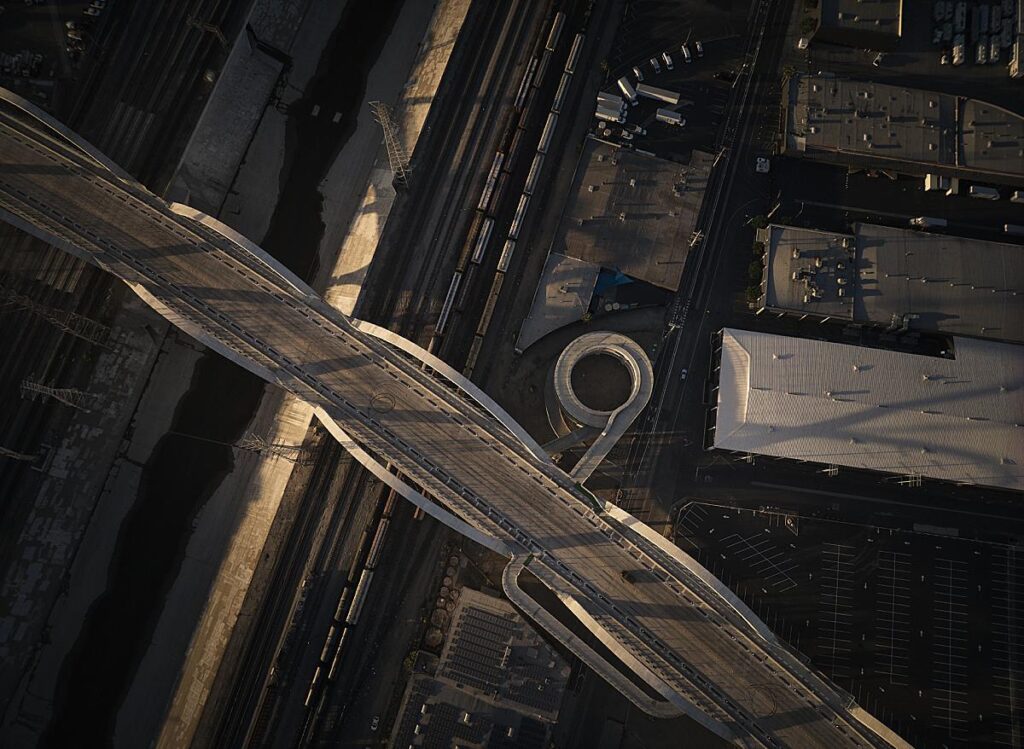
Another burning question I had was about the next two photos – a beautiful diptych of the bridge at sunset and at twilight. Is it photoshop wizardry, or did Christian camp out in this spot for the whole duration of time?
Again, he tells that it was a hybrid of the two. He said “I knew I wanted a golden hour scene and a twilight scene that one could swipe through without changing the composition, so it did require me to be parked in a specific spot for a couple of hours. I knew once that tripod was planted, I wouldn’t be able to step away for anything else, ( it is LA, and you don’t want to leave your camera unattended), so I made sure to power through my ‘daytime’ shot list beforehand.
Post Production was a matter of picking my favorite frames of human elements and cars and painting them where appropriate and just really measuring the lighting ratios I found favorable. Light and color change rapidly at this time of day/ twilight so plates had to be adjusted accordingly so they would match. Also, the lights on some of the arcs for the twilight shot weren’t on that day for some reason, so I had to add them in post. Hopefully, nobody gives it a second thought.
Everything else was just a matter of artistic adjustments to taste: contrast and color grading, sky replacements, and overall mood and tone. “
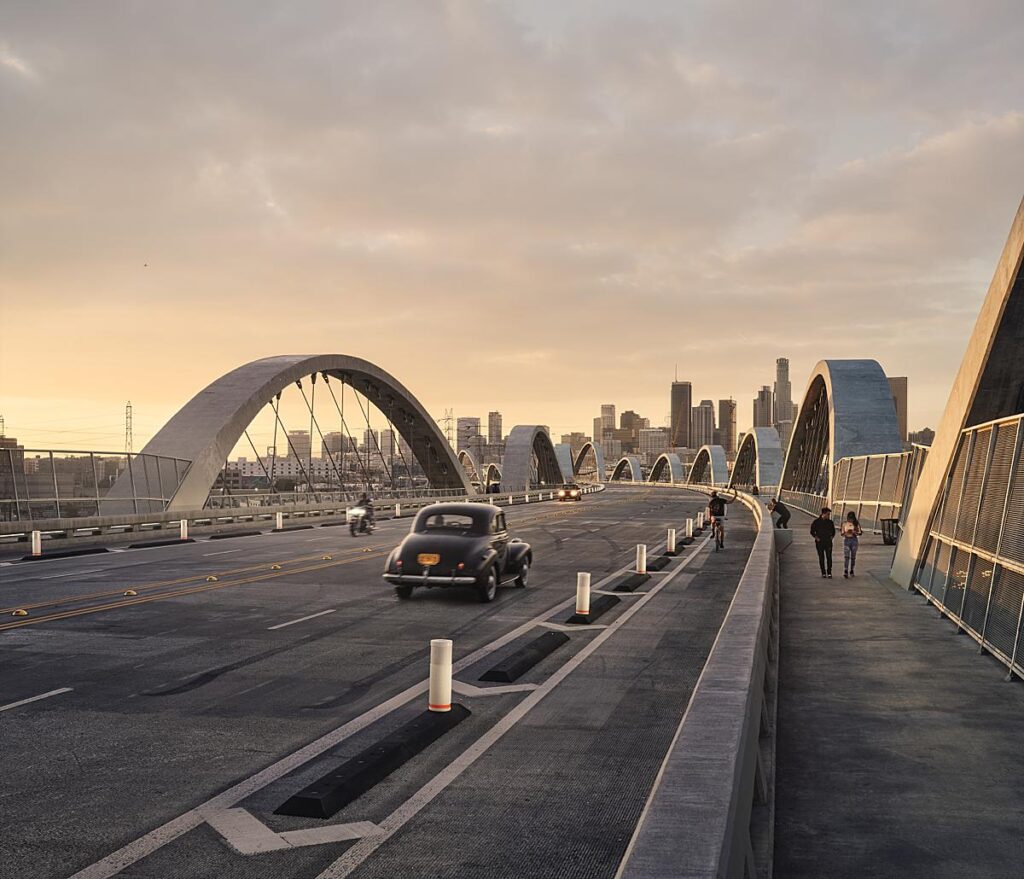
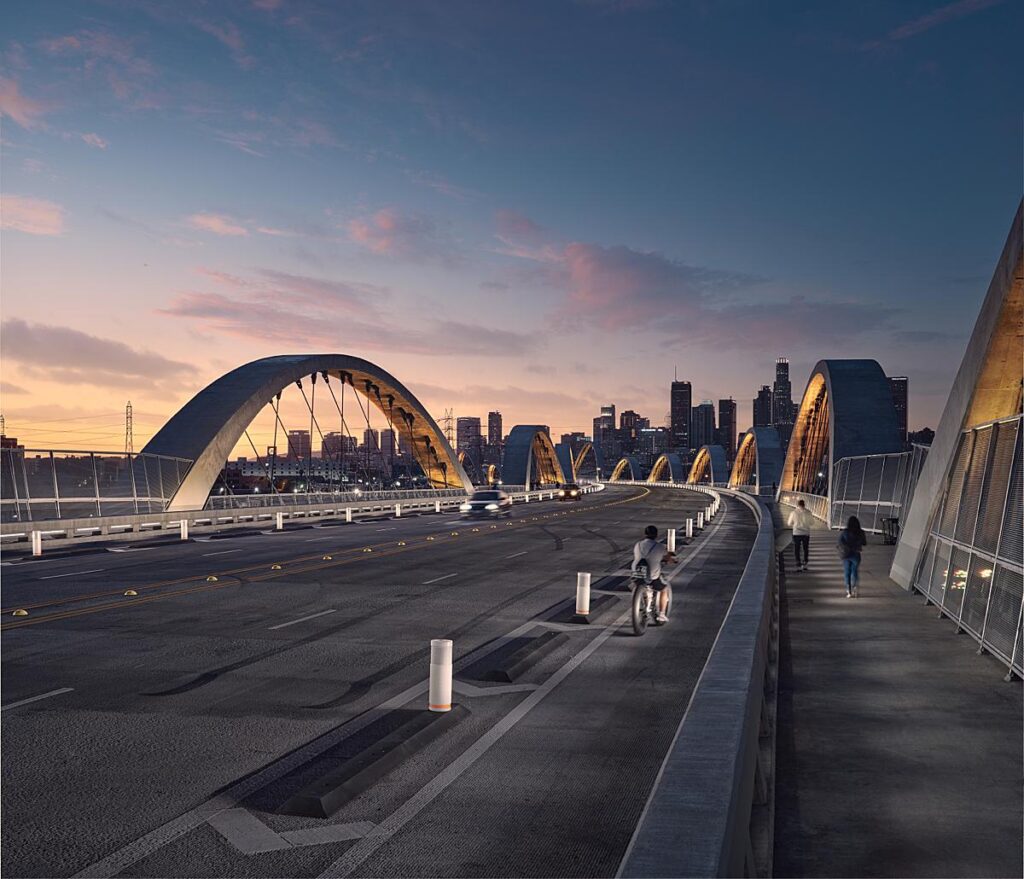
Christian speaks on another challenge he had to overcome while shooting this project – “The second major challenge was simply getting through my shot list in time. Like I mentioned before, I had a very limited window of time lighting-wise to get all the shots I wanted, which were a combination of wide establishing shots, details/vignettes, and drone shots, so as much as I hate talking about gear under normal circumstances, there are times when it does matter.
My preparation for this shoot resembled a montage for an action film where we see a series of cuts of our hero arming himself to the teeth before a major showdown.
I had my Canon R5 with a 70-200 RF lens strapped across my chest for details and background compression. My Fuji x-pro 3 occupied a second strap on my hip with a 27mm (40mm FF equivalent) lens. This would be my rapid-fire option to get more reactive shots as life unfolded before me. And finally my Fuji GFX 100s on a tripod and a trigger for my ‘hero shots.’
I threw everything else in a camping wagon, so I could switch lenses and fly the drone at a moment’s notice and moved as fast as I could between shots that were planned and opportunities that presented themselves at the moment. My work lately has greatly benefitted from incorporating more hand-held, fire-from-the-hip shots and letting them complement my more polished tripod shots. It’s made me a better storyteller with my photography and has added a new level of joy to the overall experience.”
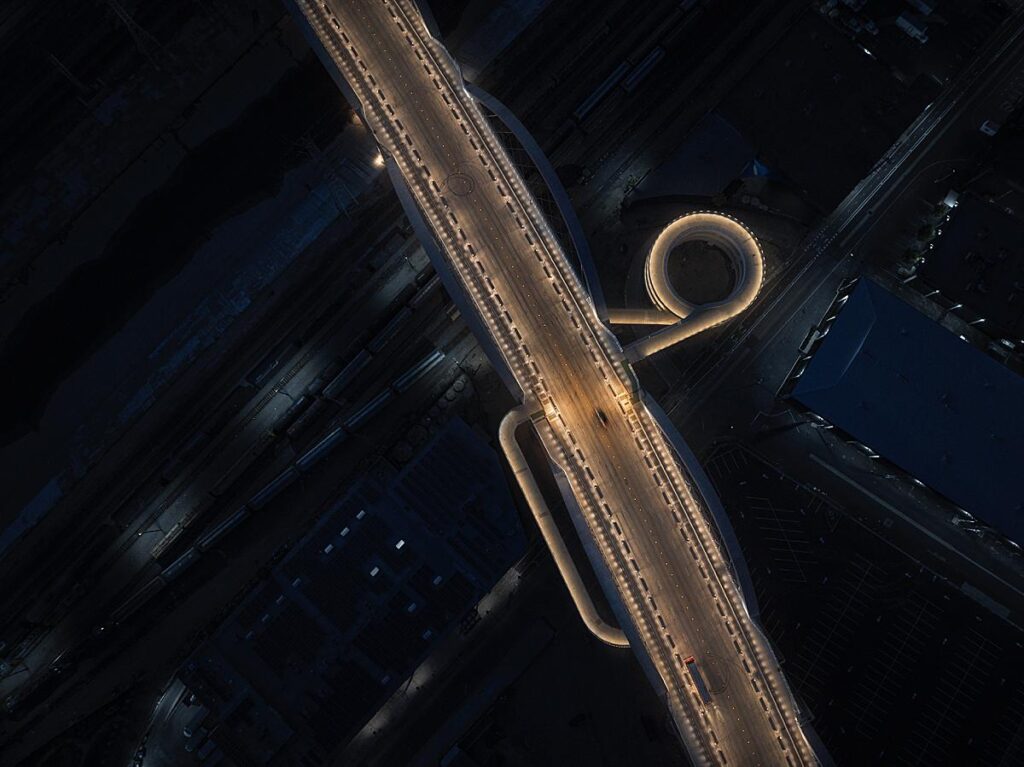
We’ll close out this beautiful Project of the Week with one of Christian’s favorite photos from the shoot. He elaborates “It demonstrates the bridge’s purpose in one simple image (connecting Boyle Heights to the Downtown Arts District), and it highlights the design elements. It also possesses an ethereal magical quality that personally reminds me of the Bifrost bridge connecting Midgard to Asgard, which probably does nothing more than expose me for the huge nerd that I am. The color harmony just works for my eyes too as the surrounding warehouses are dim and cool while the bridge, the main subject, is the brightest thing in the image and just emanates with warmth.”
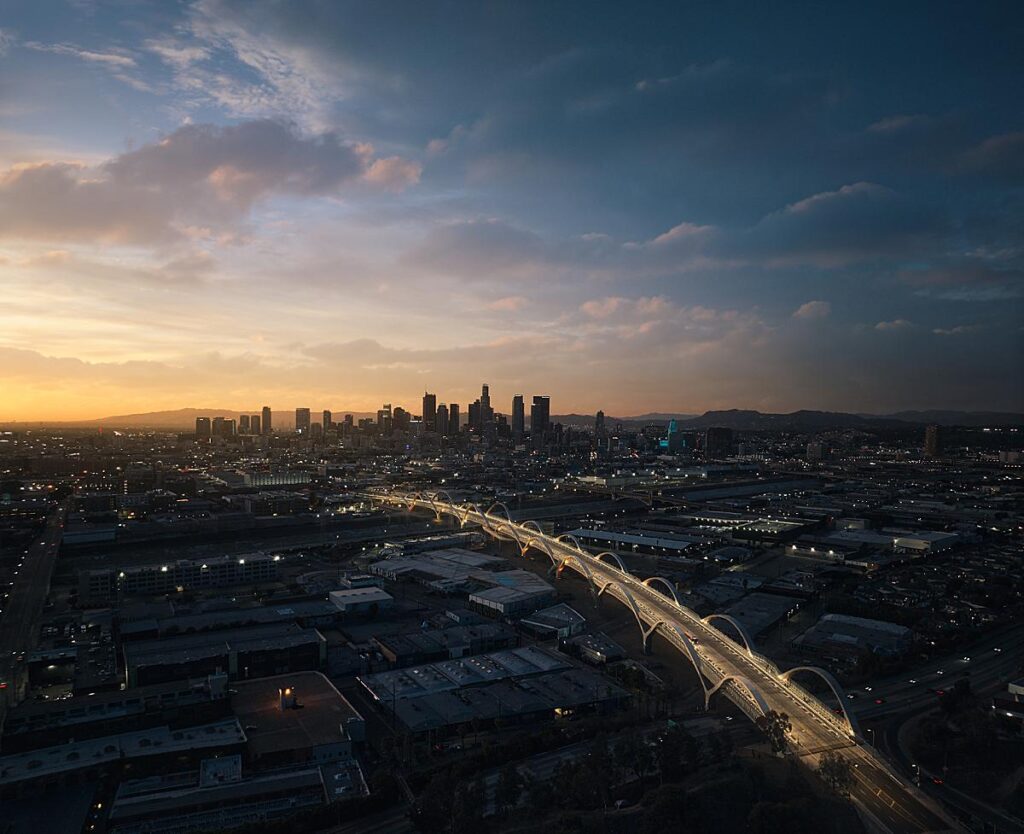
An enormous thank you to Christian for sharing all of the details with us about this amazing personal project. We hope it inspires you to get out and photograph something just for the joy of it!
Head over to csantiagophoto.com to see more of Christian’s stunning work. You can also check out his Instagram @csantiagophoto.
If you have a project you’d like to be considered for Project of the Week, you can submit it here.
